Life after the Chelsea Flower Show: where do the gardens go?
For some gardens, the Chelsea Flower Show is only part of their journey – we talk to designers about what comes next for their designs

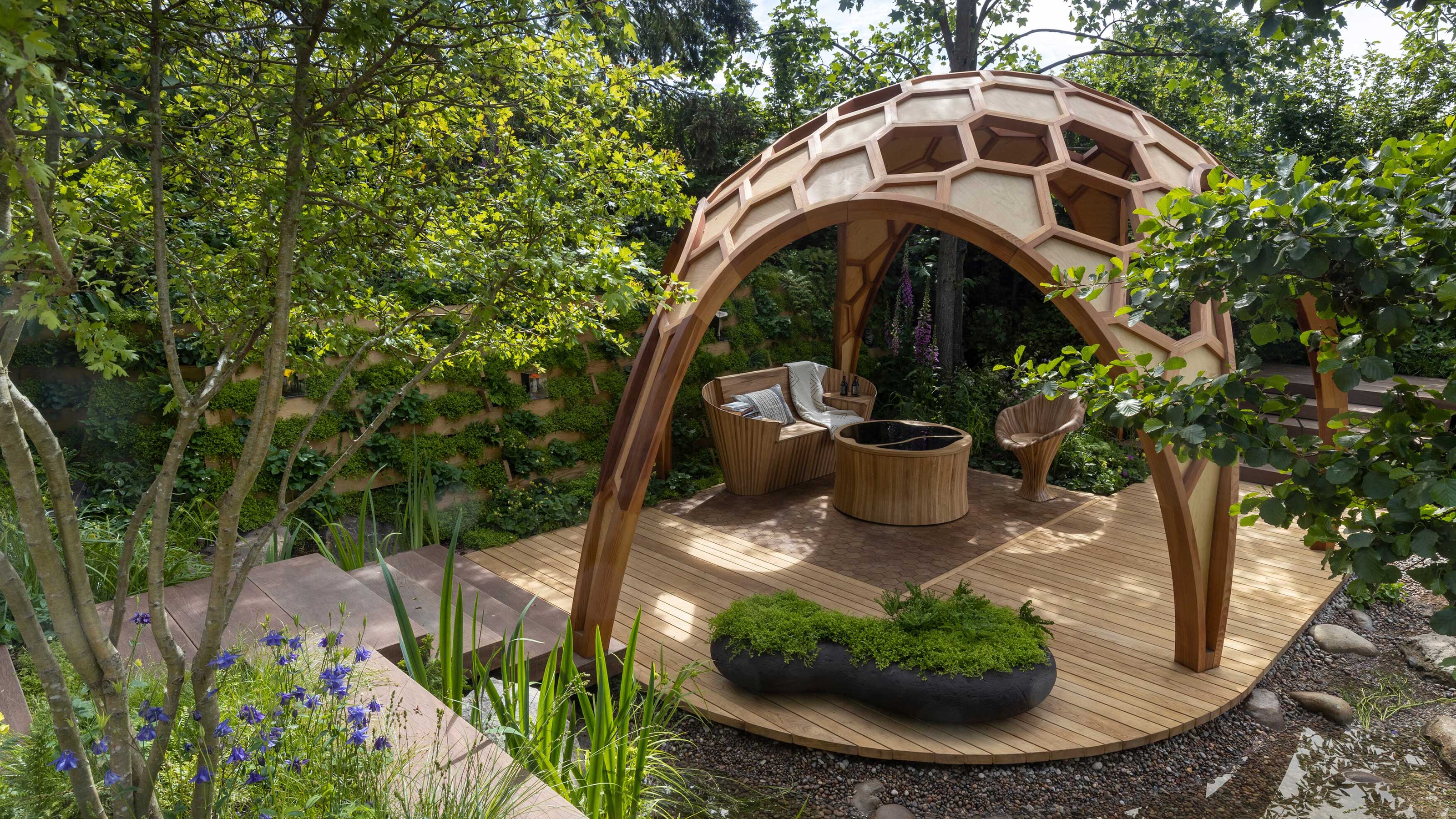
The biggest event in the gardening calendar is here. The RHS Chelsea Flower Show 2022 is a week-long extravaganza, showcasing the crème de la crème of garden design and horticulture.
For the week of the 24 May, the grounds of the Royal Hospital will be teeming with plant enthusiasts, eager to see what new and exciting plant varieties world-famous growers will be showcasing in the Great Pavilion.
Visitors will also be dining on a feast of garden design inspiration from the many show gardens, which have been months, and even years in the making.
If you've ever been lucky enough to be amongst the euphoric throng then you'll be well aware of the incredible feats that designers and stall holders achieve with their displays, for what is effectively a week-long life span.
You might not, therefore, be alone in wondering where all this glory and splendor disappears to once the final curtain has been drawn on the RHS Chelsea Flower Show.
Garden designer Ruth Willmott, a Chelsea veteran, believes that designers should see it as their responsibility to consider the after life of their gardens. 'I think the most important thing you can do as a designer of a Chelsea garden is to ensure you design and build it so that as much of it as possible is able to live on in another location after the show,' she says. 'It is something I have done with all my Chelsea gardens.'
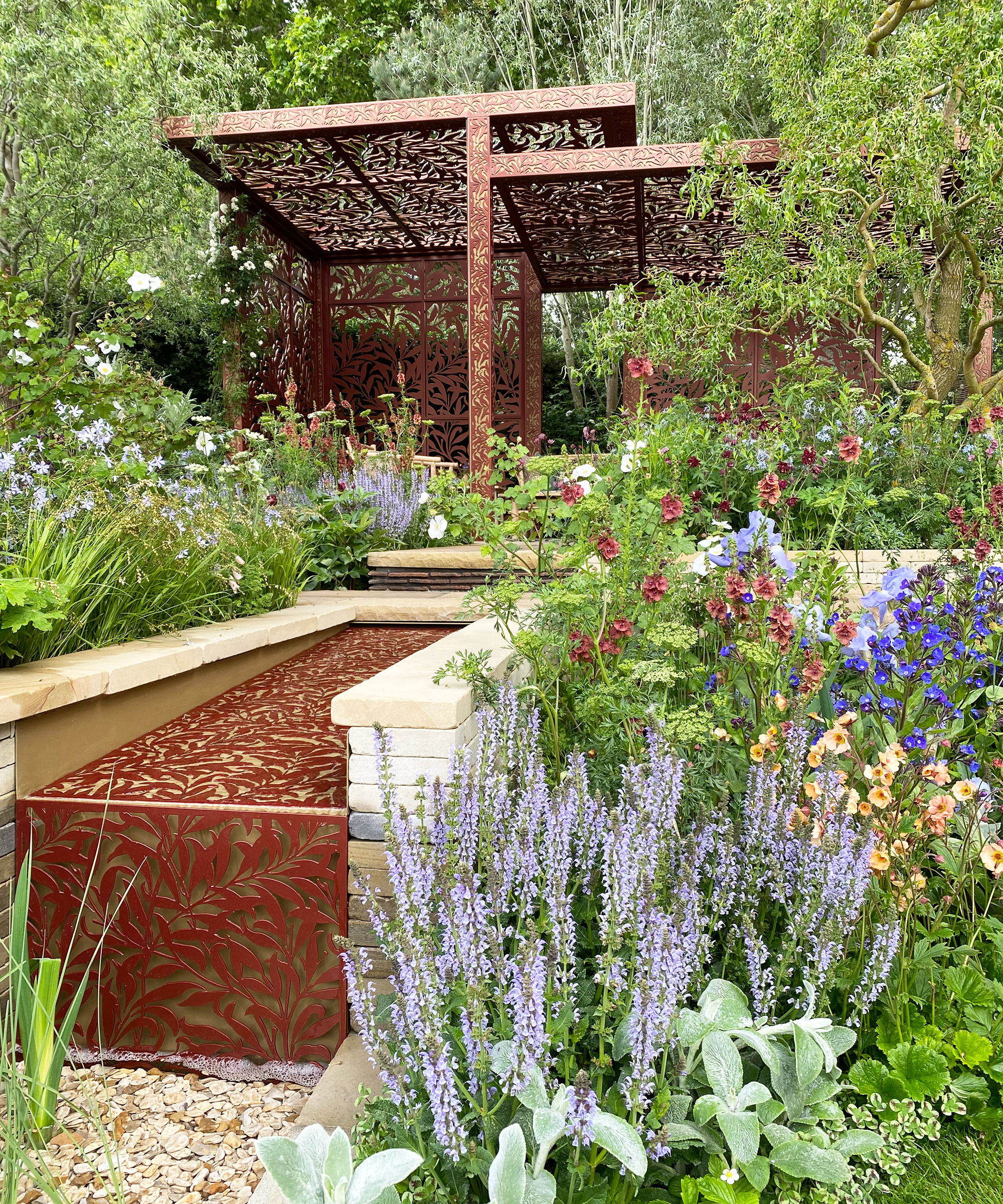
Tried and tested show garden relocations
Many of the designers I've spoken to at this year's show have given thought to where their plants and materials will be going once the show closes its doors. This includes Jamie Butterworth's The Place2Be Securing Tomorrow Garden, designed for the children at Viking primary school in West London, and Lily Gomm's Swiss Sanctuary Garden where plants are being donated to public gardens in south London.
For an example of where this has been a success, we can look to the 2021 gold medal award winning Yeo Valley Organic garden, designed by Sarah Mead and Tom Massey.
With sustainability and organic gardening at the fore of Yeo Valley's ethos, their Chelsea design would need to have more to give than its fleeting shelf life at the show.
'The opportunity to showcase our little corner of Somerset at RHS Chelsea 2021 was a dream come true,' says Sarah. 'It was very important to Tom and I that people who saw our Chelsea show garden got a real sense of the real Yeo Valley Organic Garden down here in Blagdon in the UK.
'The Yeo Valley Organic Garden sits in the middle of the Yeo Valley Organic farmland so sustainability is in our DNA. On a personal level, it is extremely important to practice what we preach and we also feel that everyone can play a part in helping to resolve climate change through small actions. We feel that living in a more sustainable way is for everybody and shouldn’t be an all or nothing club.'
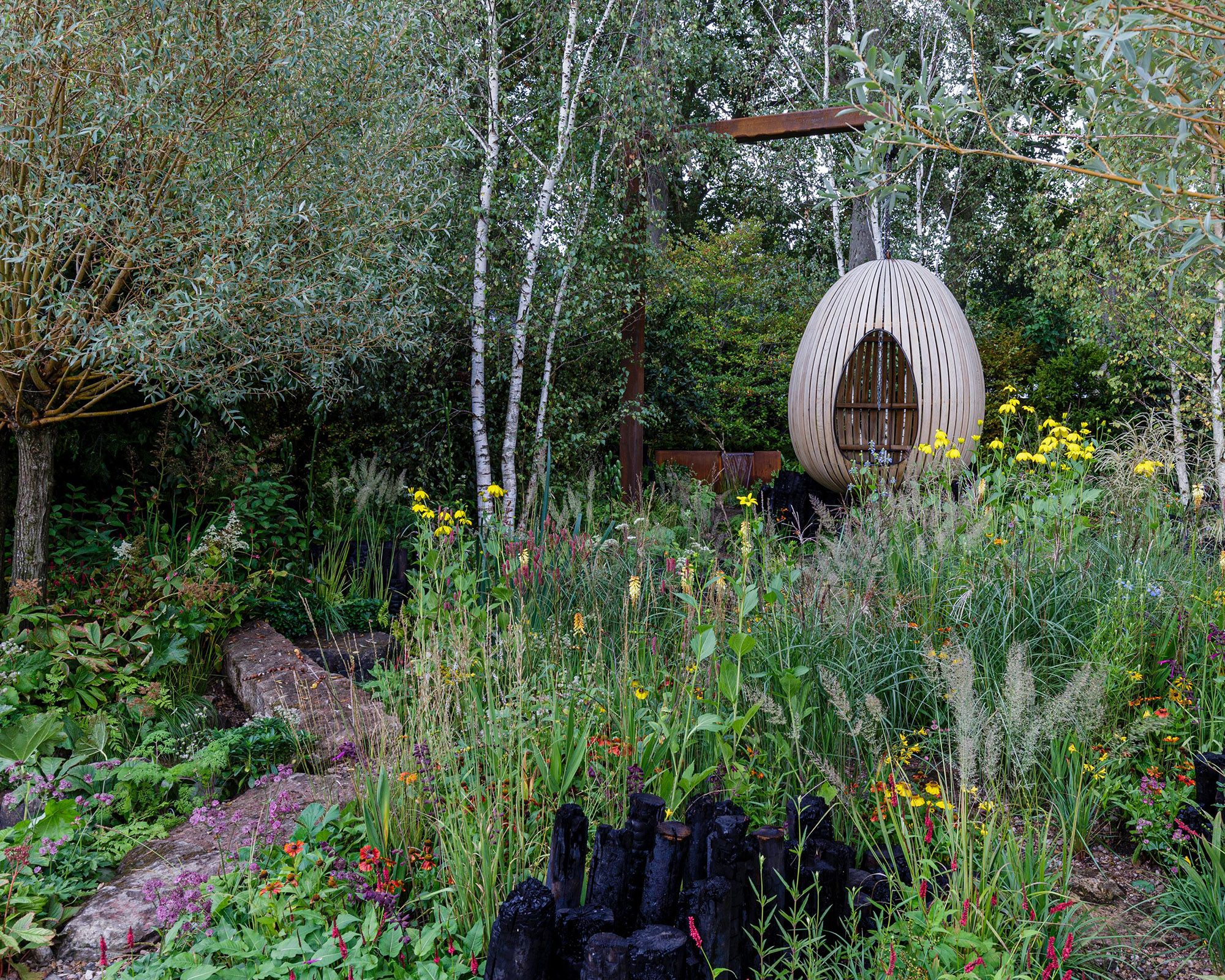
For that reason, the entire garden has now found its forever home in Somerset. 'We haven’t recreated it, but rather reabsorbed it,' Sarah explains. 'The oak hide swings above the stream in the gravel garden. The biochar walls form planting pockets in the woodland walk, the boulders and stone bridge are clustered around the pond. The corten steel header tank provides water for the stream. All the plants have been re-homed here or are waiting to go in.'
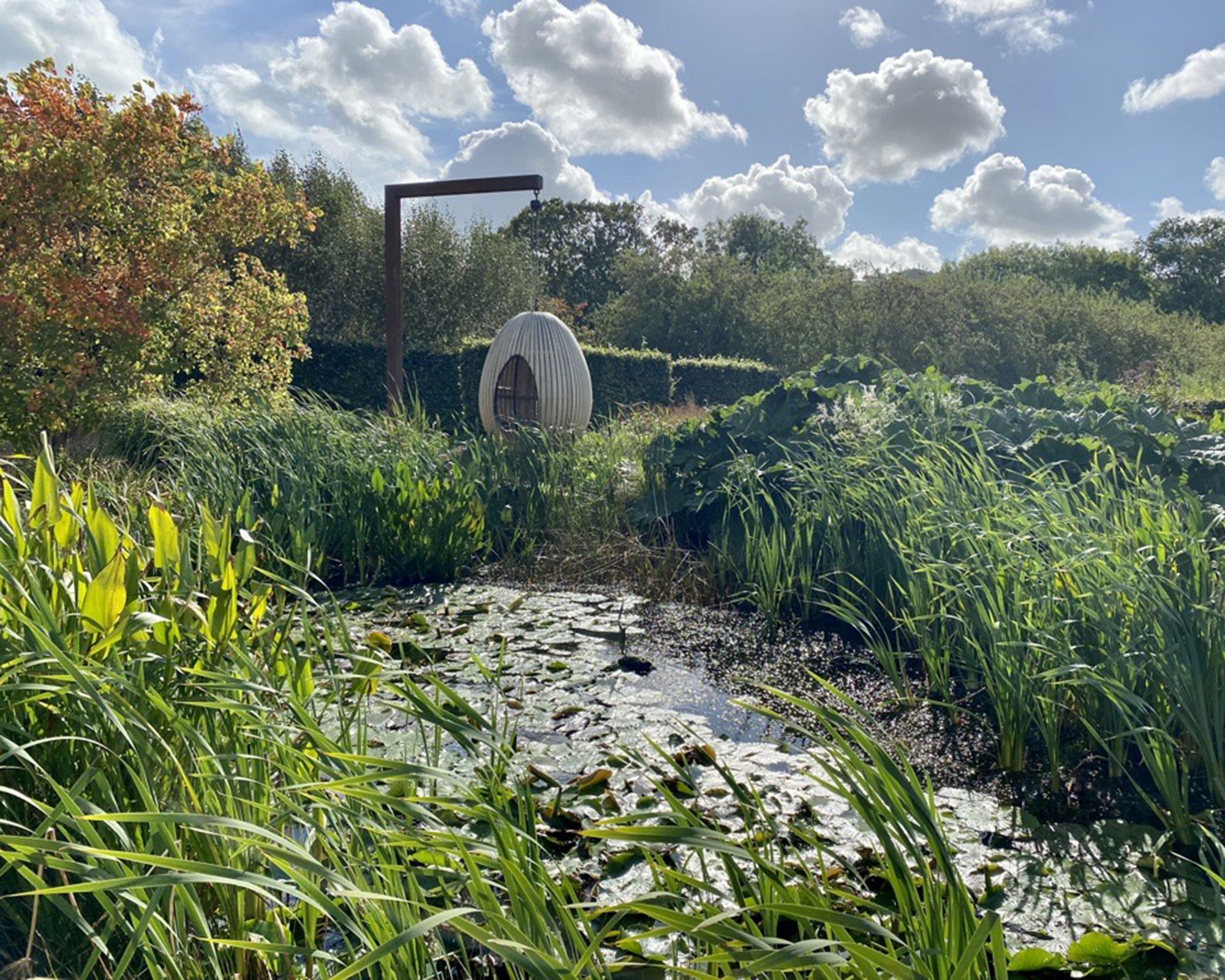
The challenges of relocating a Chelsea show garden
Creating a garden for Chelsea is an immense honor, so it's fair to say that for some, how to plan the garden design for the week of the show itself often takes precedence over considering its final destination.
'Because the show garden was inspired by our existing garden, we knew the plan was always to return it,' explains Sarah. 'Although that being said, the actual design of the Chelsea garden was not focused on how we would relocate the garden once the show was over, but rather how we could achieve a true depiction of the Yeo Valley Organic garden to our visitors at the RHS Chelsea Flower Show. Luckily for us relocating the garden wasn’t too much of a challenge design wise.'
The real challenge came when it was time to move the garden to its final resting place. 'The main challenge was one of speed! All the hard landscaping, the wooden egg structure, and plants had to be off-site within 24 hours.
'Luckily for us, we have plenty of storage space available on the farm, but rehoming 5,000 plants is no mean feat. Especially when some of them had been in a pot for 2.5 years due to the delays of the show as a result of the pandemic,' says Sarah.
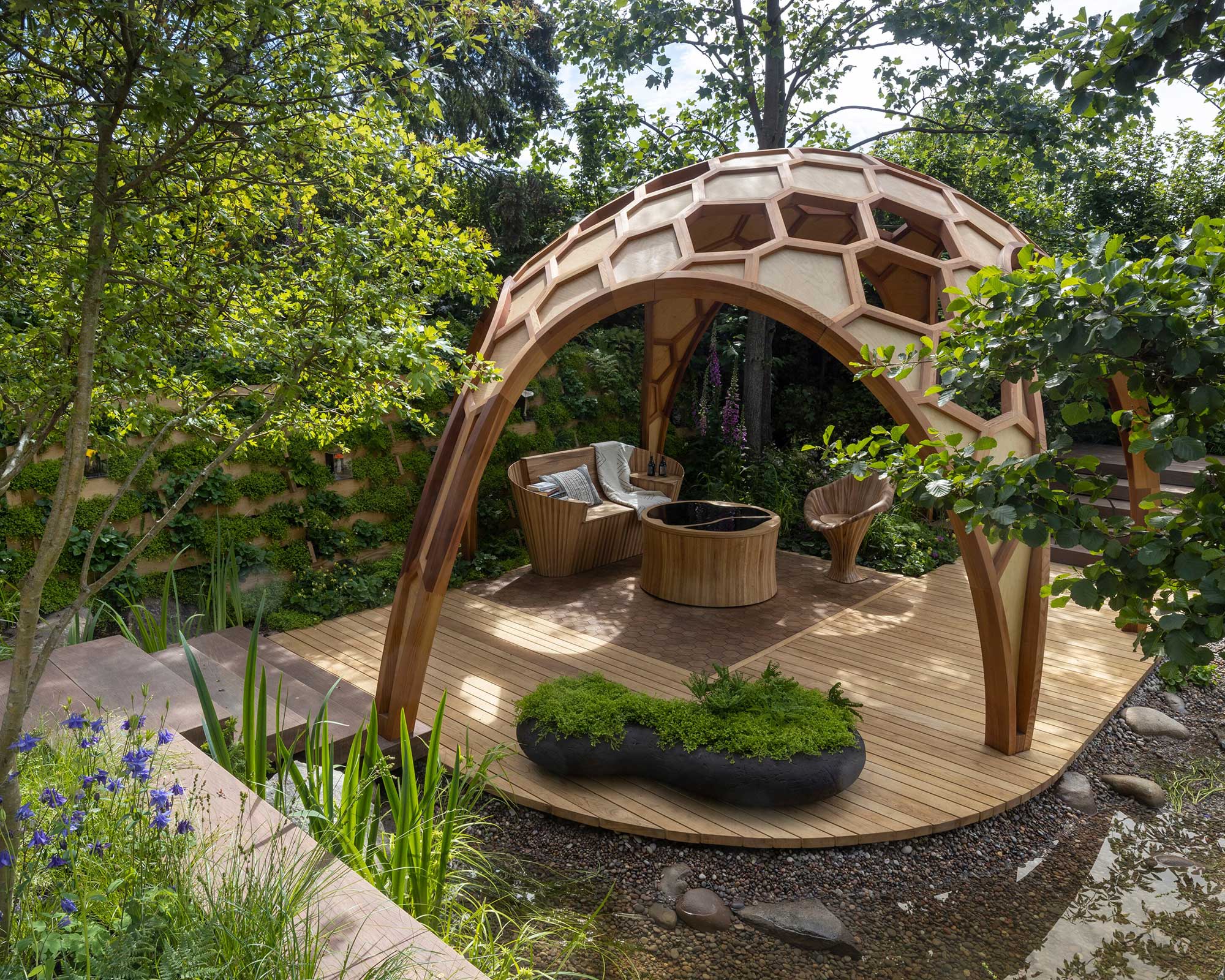
The Yeo Valley Organic garden is an example of where having a design which is aligned with an existing location makes it easier to repurpose it back into the landscape it was originally designed to embody.
In 2022, Joe Perkins' design, The Meta Garden: Growing the Future, plans to do just that. The garden aims to highlight the connection between plants, soil, and fungi in the woodland ecosystem, and to bring to life the complex underground communication-webs found in nature. 'Only 13% of the UK has woodland cover – a shocking number compared to the rest of Europe, which has above 35%,' says Joe.
What better way to enforce the message than by ensuring that the garden finds its way into British woodland after the show.
'After its initial appearance at the Chelsea Flower Show, the garden will be re-homed at the Conkers Discovery Centre, in the heart of the National Forest in the Midlands, UK. Here, The Meta Garden will be available to the 250,000 visitors who come to Conkers in the National Forest each year,' Joe explains.
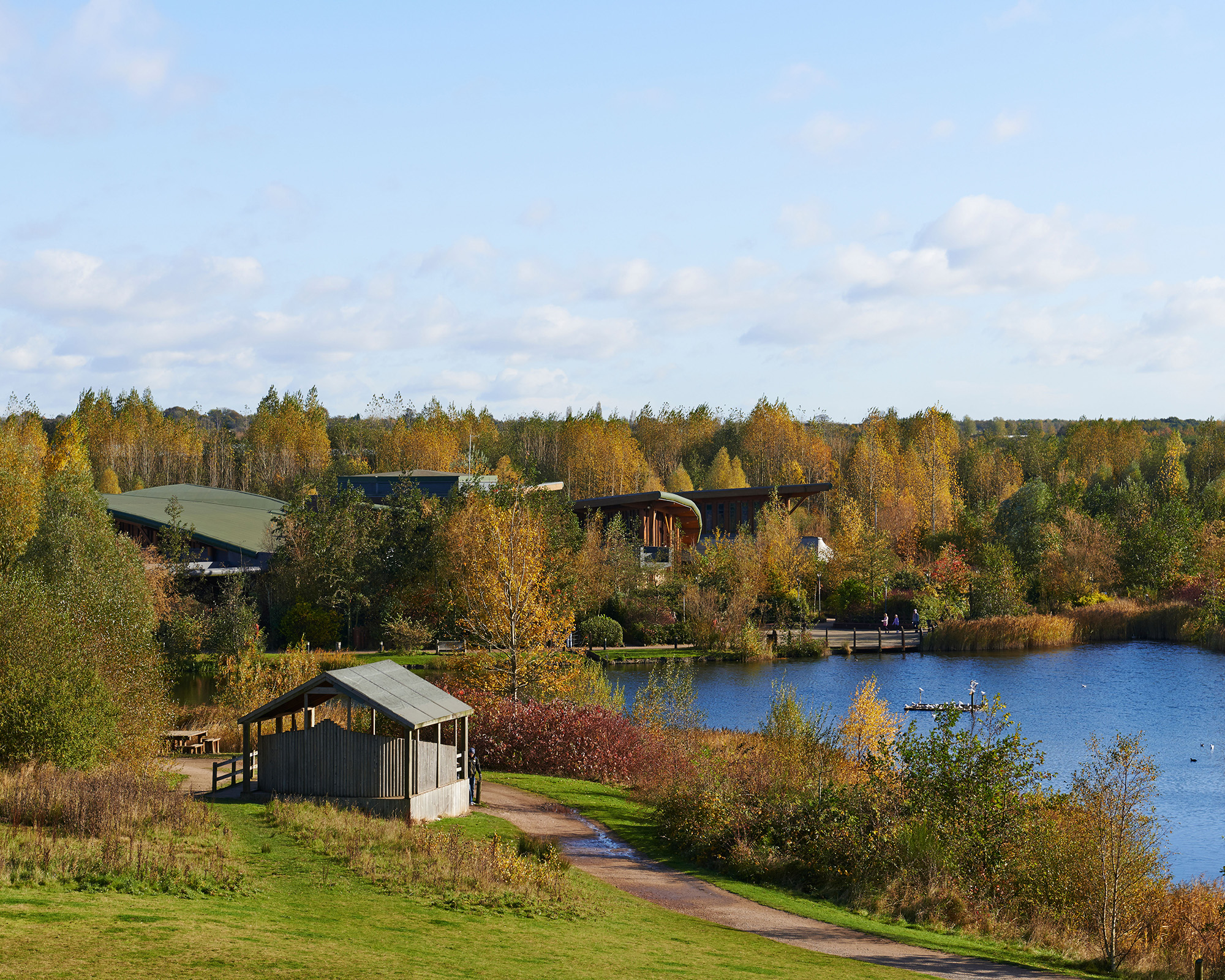
A social responsibility
Sustainability and giving back to the environment are obviously huge motivations for designers to re-home their Chelsea gardens. But for Ruth Willmott and her William Morris-inspired garden, staying true to the historical aspect of her garden was also important when finding a forever home for her plot.
'The Morris & Co. Garden is a modern interpretation of two of William Morris' most iconic wallpaper designs, Trellis and Willow Boughs, and uses color and pattern to bring his beautiful interiors into the natural outdoor setting which originally inspired them,' Ruth tells us.
After the show, elements of the garden will be relocated to several new community gardens on the Packington Estate regeneration project in Islington, London, in collaboration with the Arc Centre Gardening Collective. This newly redeveloped estate is located around the corner from the site where Morris' prints were first produced over 160 years ago.
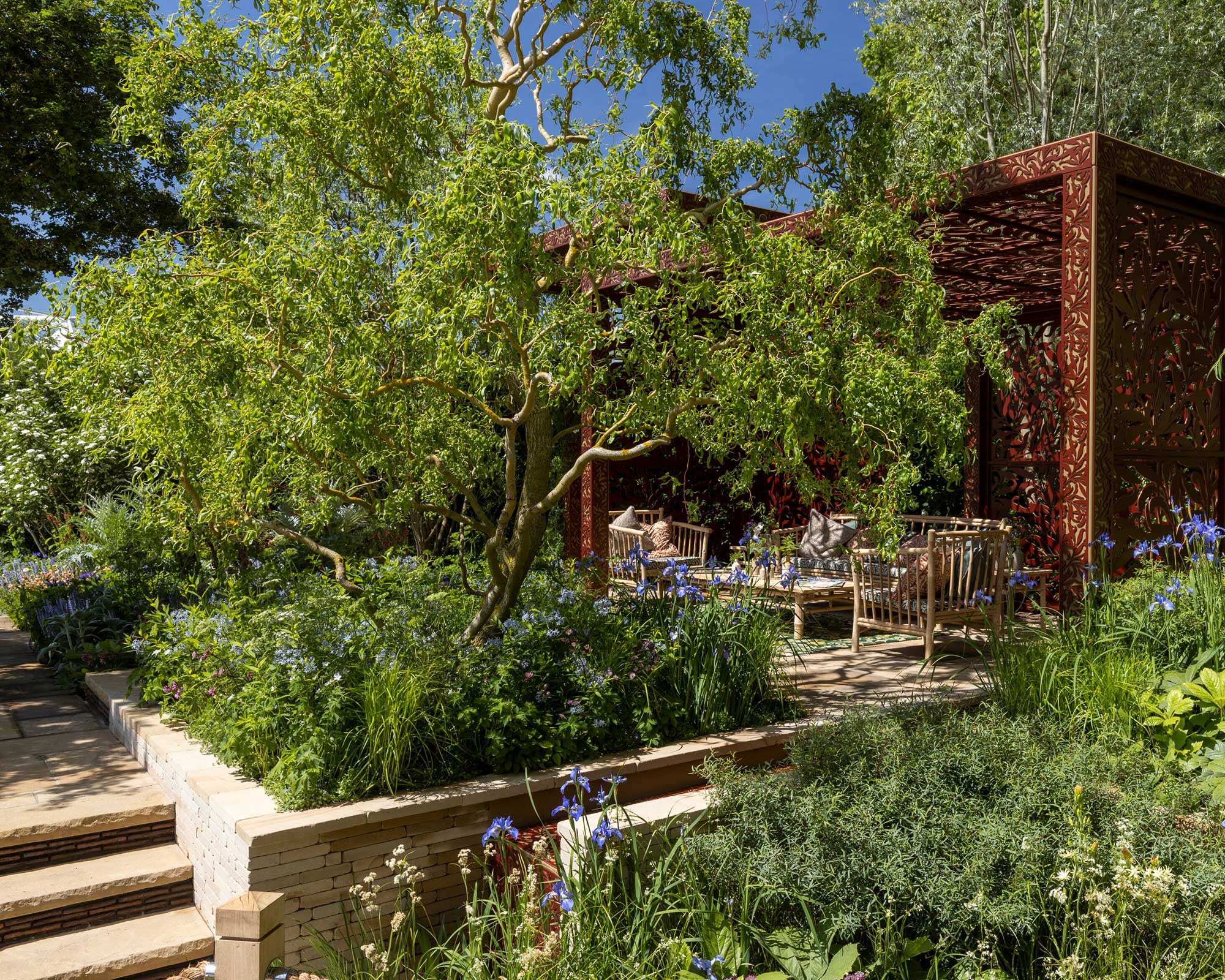
Ruth had started this year's Chelsea journey knowing that she would be relocating the garden, as she had done this with all her previous Chelsea gardens.
'We had always planned to relocate elements of the garden after the show. My Sustainability Director, Joey Tabone, found the location for us and when we realized that the Packington Estate was situated just a street from where William Morris produced his first prints, we jumped at the chance to work with Islington Council and the Arc Centre Gardening Collective on the relocation. It really felt like it was meant to be,' she says.
Relocating a Chelsea garden has as much a social responsibility as an environmental one. One of the best things about relocating a a garden is the fact that it will be enjoyed by so many more people.
In Ruth's case, other than the residents living on the Packington Estate, the gardens are used by people visiting the playground within the estate, and by other members of the public passing through on their way to the Regent's Canal.
A new approach to design
Garden upcycling and repurposing has always been a passion of Lynne Lambourne, and her garden, designed for the GARDENA stand at Chelsea, was entirely informed by repurposing salvaged materials, which could then be re-purposed again after the show.
'I work in reverse to most designers,' Lynne comments. 'I have to design around what I can salvage or find to repurpose. It makes it more challenging but the impact to the planet is minimal and the result is a really unique design.
'Any designer can go and buy expensive new things and top end plants and make it beautiful, but creating something from what otherwise would end up in landfill is the real challenge,' she says.
'I can’t just place an order for something that looks pretty – everything I do has to be considered – turning trash to treasure and upcycling requires vision.'
And as mentioned before, there is a socially conscious element to ensuring that these gardens can be enjoyed by more people than a privileged few who attend the show. After the show, Lynne will be repurposing some of the features to her Warriors On Waste garden where she runs bootcamps to teach children about sustainability and taking better care of the planet.
'They love learning about growing their own food and seeing what insects and bugs they can identify. I am also working with a local school to make a mini farm, again to teach sustainability, so some of the garden will be repurposed there too. The plants will be resold to raise money for the Ways And Means Trust – a charity that I work with that supports adults with learning or physical disabilities or poor mental health through teaching them gardening. They have actually grown lots of the plants in the garden for me, too.'
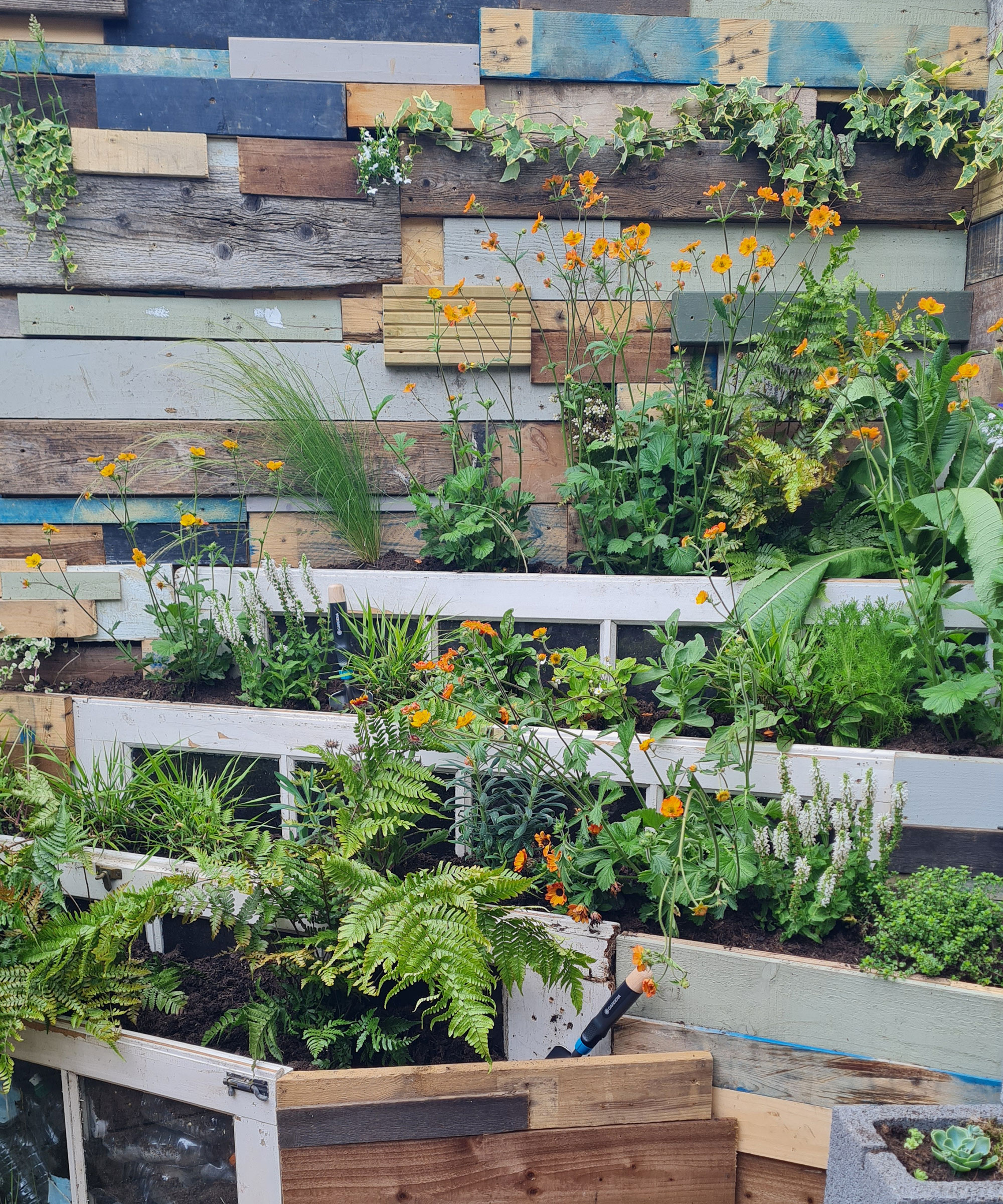
Making sustainability a key focus
Lynne's approach to her design demonstrates a shift in our way of thinking, by bringing sustainable gardens and environmental considerations to the fore.
As a result of the pressure to change our practises due to the mounting global climate crisis, I wonder if we could begin to see this attitude being adopted (either voluntarily or by necessity) in all creative industries.
For example, we might want pristine patio materials, but what resource has gone into producing the materials brand new? Could you turn to the next best thing, a recycled stone paver for example? It might not be exactly what you wanted but does the positive environmental impact make the sacrifice worthwhile? And from a social angle, rather than throwing away unwanted plants and materials, why not seek out community garden collectives or ask local schools if they might have a use for them?
As Lynne so succinctly puts it: 'It doesn’t really make sense to me that some of our gardening practices harm the planet rather than take care of it.'
We have already seen Chelsea gardens of recent times adopt a more naturalistic style, with a sympathetic use of hard landscaping ideas. And whilst this is great for blazing a new trail for creating eco-friendly gardens, these practices need to be backed up by ensuring a lack of waste and an increase in sustainability at the show itself, as well considering how the show can have a wider reach and spread these messages to our wider society.
Now that the show has opened its gates to the crowds it's clear how much delight this year's cohort of designers have caused with their gardens. And it's wonderful, therefore, to know that many will continue to bring joy long after this year's historic show comes to a close.
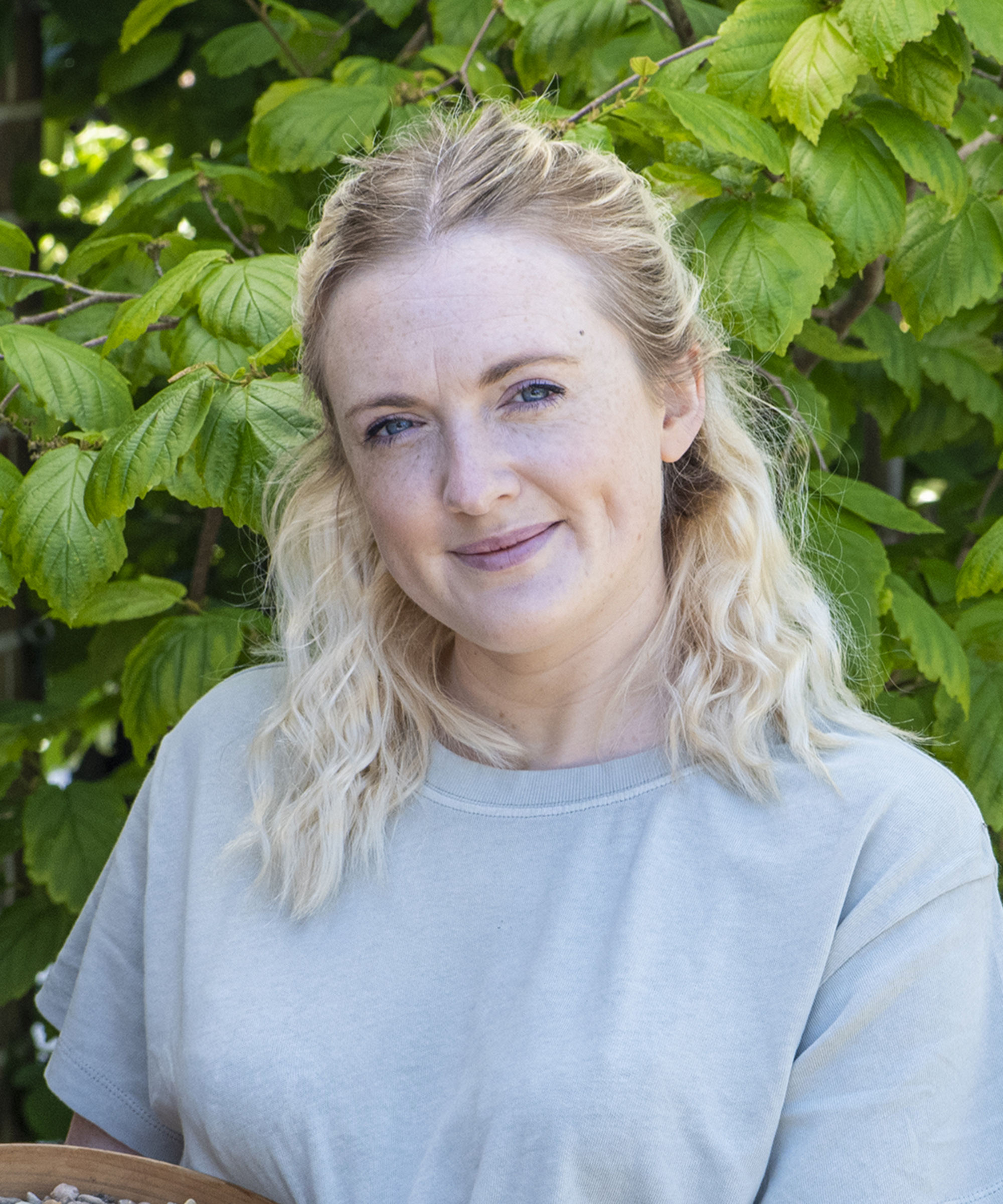
Teresa has worked as an Editor on a number of gardening magazines for three years now. So she is lucky enough to see and write about gardening across all sizes, budgets and abilities. She recently moved into her first home and the garden is a real project! Currently she is relishing planning her own design and planting schemes. What she is most passionate about when it comes to gardening are the positive effects it has on our mental health to grow and care for plants, as well as being great for the environment too and help provide food and shelter for wildlife.
